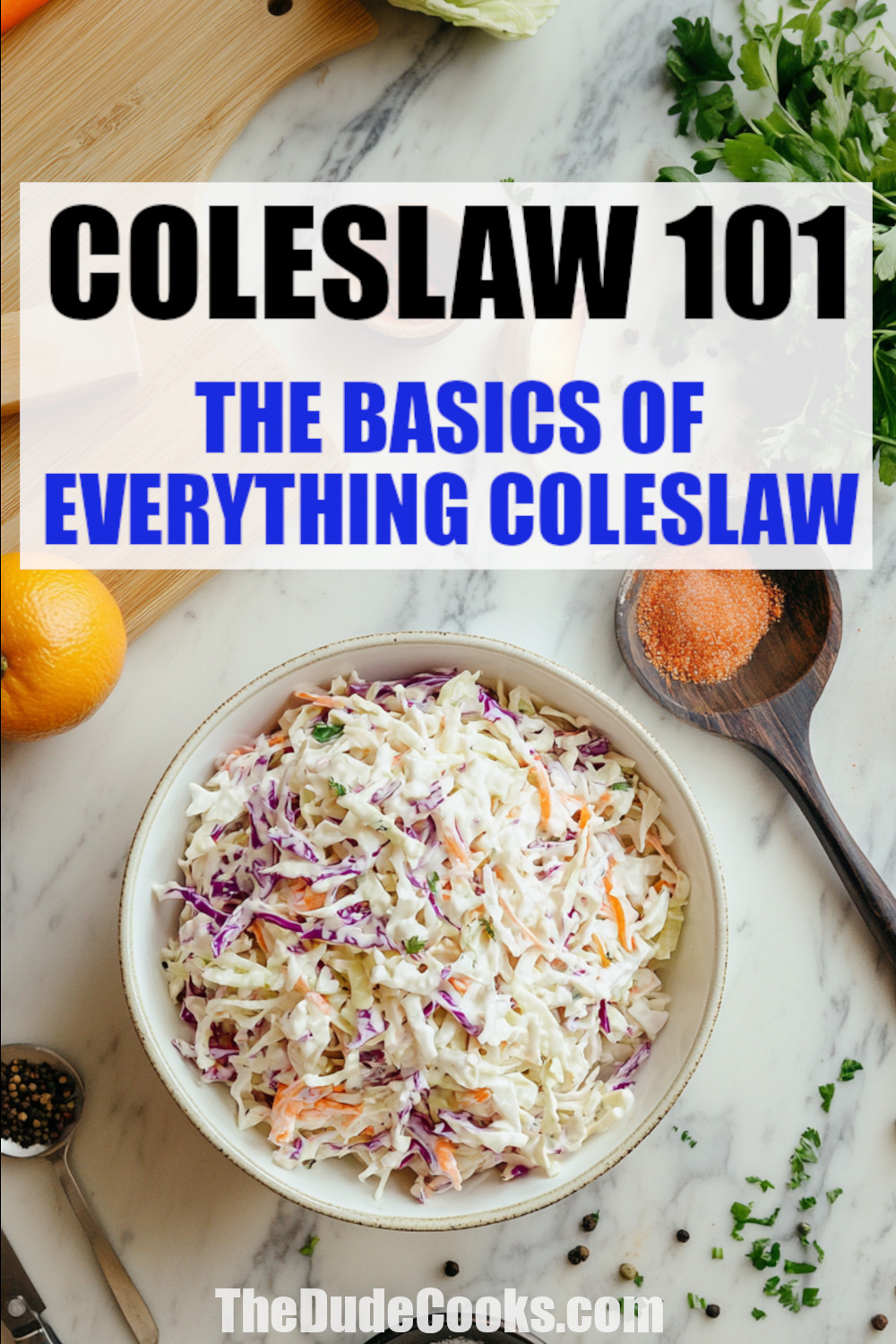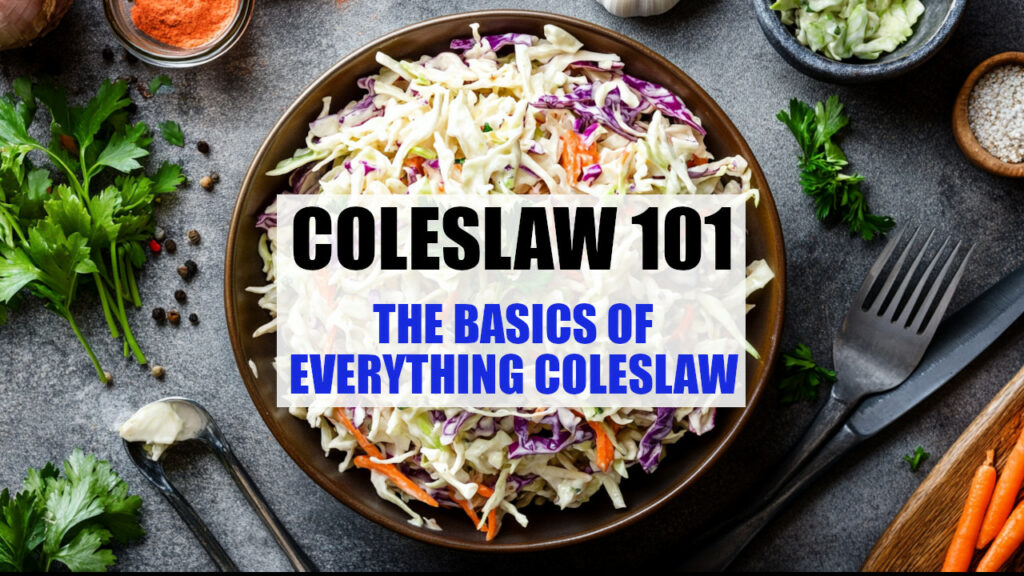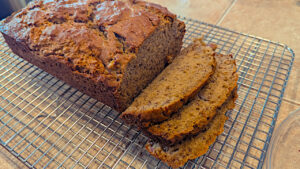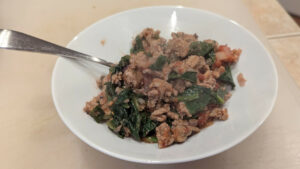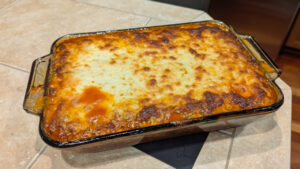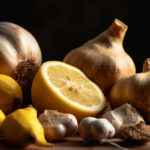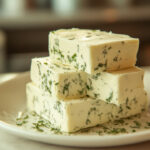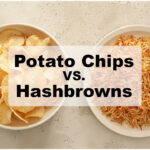Coleslaw. It’s a picnic staple. It’s a barbecue buddy. But what is it, really? Where did this creamy, crunchy concoction come from? And how do you make it perfect? We’ll dig into all things coleslaw. Get ready for some cool slaw facts.
The Ancient Roots of Coleslaw

Coleslaw’s roots are ancient. There are records of people eating simple cabbage salads as far back as Greece and Rome.
In classical antiquity, cabbage was widely consumed and praised for its medicinal properties. Hippocrates (5th century BCE) and later Galen (2nd century CE) wrote about its health benefits. The ancient Greeks likely prepared cabbage in a simple salad form, much like today’s Lahanosalata (Greek cabbage salad), which consists of finely shredded cabbage, olive oil, vinegar or lemon juice, salt, and sometimes herbs like dill.
While no exact recipe survives from ancient Greece, references in Greek literature suggest that raw or lightly prepared cabbage was eaten with vinegar and olive oil, making it one of the earliest forms of a Greek cabbage salad.
The Dutch Get Sweet
Fast forward a thousand years to the the 1600s and 1700s, and a thousand miles north to the Netherlands and the Greek cabbage salad has evolved into a dish that the Dutch called “koolsla.” That translates, quite unsurprisingly to “cabbage salad.” While they didn’t get creative with their naming, they did take “koolsla” to the next level.
The Dutch added some new things. Butter, mustard, and dairy were used. These led to creamy dressings. Apples, onions, or sugar were sometimes added. This made it sweeter. It still wasn’t what we consider to be coleslaw today because it was missing one key ingredient, but the French were about to invent something that would change everything.
The French Connection
The first appearance of a dressing made by emulsifying egg yolk in oil appeared in “Le Cuisinier Royal et Bourgeois” by François Massialot in 1694. While it gotten a proper name quite yet, his emulsion, used as a base for other sauces and dressings was a hit.
As the stories go, it was Duke de Richelieu’s cook who named the sauce after the French victory at Port Mahon (Menorca, Spain), whipping up his version of François Massialot’s emulsion and naming it “Mahonnaise.” Whether that is fact or fiction is up for debate, but we do know that it is in 1806 first published instance of the name mayonnaise appears in a cookbook.
“Koolsla” became popular in Dutch settlements. This included early America. The biggest change was the dressing. It went from light and vinegary to creamy. Mayonnaise became the star. That’s how we got the coleslaw we love today.
American’s Make Coleslaw Theirs
While the French were busy playing with sauces, the Dutch had set up shop in the Americas and brought their koolsla with them. The recipe remained relatively unchanged until us Americans did what we do best, take an idea and commercialize it for mass production.
In 1912 Hellmann’s launched the first mass produced mayonnaise. It was only a matter of time before the Dutch koolsla and the French mayonnaise would get combined and give birth to the truly American coleslaw. It was a mere two years from the launch of Hellmann’s mayonnaise for a recipe for mayo-based coleslaw mayonnaise-based coleslaw appeared in the “Blue Ribbon Cookbook” by Jennie C. Benedict
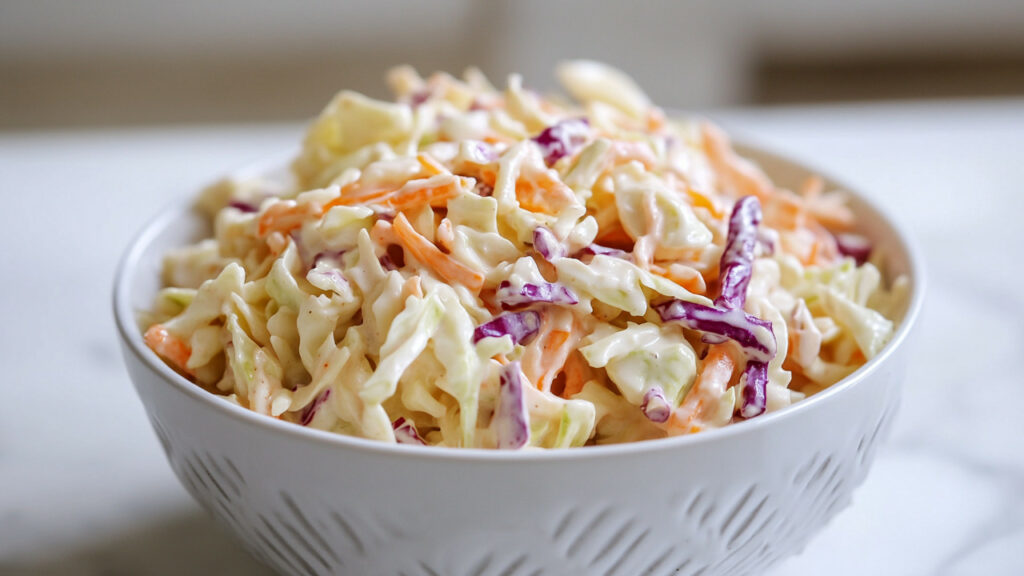
What Is Coleslaw Made Of?
Since it’s appearance, American coleslaw has morphed into a massive number of variations. The ingredients for a basic coleslaw look like this:
- Green cabbage (shredded) – The main ingredient, though some recipes mix in red cabbage.
- Carrots (shredded or julienned) – Adds color and sweetness.
- Mayonnaise – The creamy base of most modern coleslaw dressings.
- Vinegar (white, apple cider, or white wine) – Adds tanginess and balances the richness of mayo.
- Sugar – Provides a touch of sweetness.
- Salt and black pepper – For seasoning.
- Dijon mustard (optional) – Adds depth and a little sharpness.
- Celery seed (optional but common) – Adds a slightly earthy, peppery note.
Common Coleslaw Variations
We can’t just leave well enough alone, so over the last 100 years, we have tweaked and modified coleslaw about as many ways as there are cooks. Here are a few of the most common coleslaw variants.
KFC Coleslaw Copycat
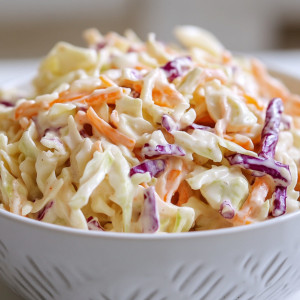
KFC’s coleslaw is held up as one of America’s best coleslaw. Now some people are not fan’s of it, but one thing is for sure. Love it or not, it remains an icon of American coleslaw
Coleslaw for pulled pork
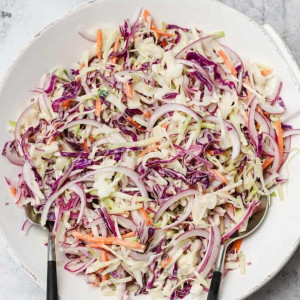
A good coleslaw for pulled pork is often a vinegar-based or lightly dressed coleslaw. The tanginess cuts through the richness of the pork. A Carolina-style coleslaw, with a slightly sweet and vinegary dressing, is a classic pairing. It adds a refreshing crunch and balances the smoky flavors.
Coleslaw For Fish Tacos
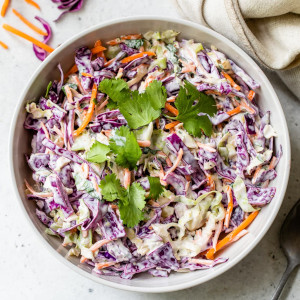
For fish tacos, a light and bright coleslaw is key. You want something that complements the delicate flavor of the fish without overpowering it. A vinegar-based slaw or a slaw with a lime or citrus dressing works well. Consider adding some cilantro or other fresh herbs for extra flavor. A slightly sweet and spicy slaw can also be a delicious contrast to the fish.
Coleslaw for shrimp tacos

Like fish tacos, shrimp tacos benefit from a lighter, brighter coleslaw. A vinegar-based slaw or one with a citrus (lime or lemon) dressing is a great choice. The acidity cuts through the richness of the shrimp. Adding some mango, pineapple, or jicama can create a tropical vibe. A little bit of spice, like from a jalapeño or chipotle pepper, can also add a delicious kick. Fresh cilantro or other herbs are also great additions.
Coleslaw for BBQ Sandwiches
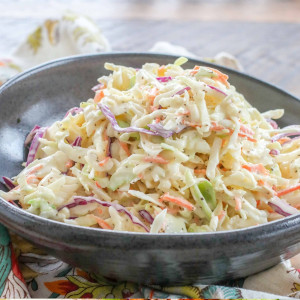
Memphis-style slaw for BBQ sandwiches is typically a creamy, often slightly sweet coleslaw. It’s designed to complement the rich, smoky flavors of the barbecue. While recipes vary, it usually involves mayonnaise, sometimes with a touch of mustard or vinegar for tang. It’s often finer than some other slaws, almost chopped, so it nestles nicely into a sandwich. The sweetness balances the savory BBQ, and the creaminess adds a nice contrast in texture.
Coleslaw for Brisket
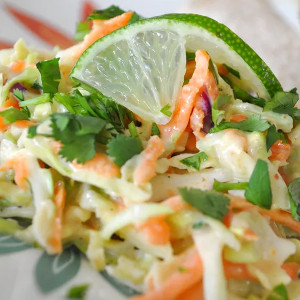
Texas coleslaw is the perfect counterpoint to rich brisket. It balances tangy vinegar with a touch of sweetness, often from sugar. A little spice, like jalapeño or chili powder, adds a flavorful kick. Fresh, crunchy cabbage and carrots provide a welcome texture against the tender brisket. This cool and crisp slaw completes the BBQ experience.
Coleslaw with ramen noodles
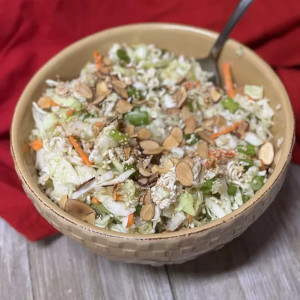
A good coleslaw for pulled pork is often a vinegar-based or lightly dressed coleslaw. The tanginess cuts through the richness of the pork. A Carolina-style coleslaw, with a slightly sweet and vinegary dressing, is a classic pairing. It adds a refreshing crunch and balances the smoky flavors.
Best Way To Slice Cabbage For Coleslaw
Unless you buy bagged coleslaw mix, you will be needing to break down some cabbage into slices. Here are the main ways of making that happen. With all of these techniques, you will start the same way. First, remove any outer leaves that look bad, then quarter the cabbage. Then with a sharp knife, remove the cores.
Shredding a cabbage with a chef’s knife
The most common way to turn cabbage into coleslaw mix is with a chef’s knife. Then using smooth strokes and while holding the cabbage with your fingers out of the way, shred the cabbage into strips. While this is the most low tech way to shred cabbage, it can result in uneven strips and some waste, plus it puts your fingers at risk.
Shredding cabbage with a peeler
On tactic for shredding your cabbage is to use a vegetable peeler. This is a relatively easy, but slow process. Not my favorite way to shred cabbage either as you will have a good bit of waste and have no control over your shred size.
Kitchen Mandolin For Shredding Cabbage
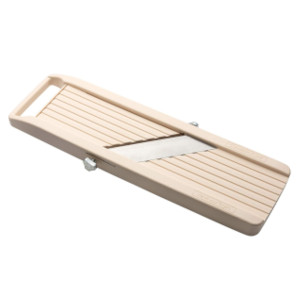
When it comes to shredding cabbage, I prefer to use my kitchen mandolin. I can control the thickness of the shreds, and if I’m being good and wearing the cut-proof glove, my fingers are never at risk. A kitchen mandolin should be in every aspiring cook’s tool chest.
Shredding Cabbage With A Food Processor
The safest and most low-effort way to shred cabbage is with your food processor. My only complaint with doing it this way is that you have to keep emptying to bowl if you are making much coleslaw, and unless you have one with an adjustable blade or multiple size blades, you can only get one size of shred.
Common Coleslaw Questions
Here are the answers to some common coleslaw related questions. If I missed something, leave a comment and I’ll add it to the list!
Can coleslaw cause diarrhea?
It’s not extremely common for coleslaw to cause diarrhea, but some people may experience it. The high fiber, raw veggies, and food intolerances may be the culprits.
Can coleslaw cause gas?
Yes, coleslaw can cause gas because it contains cabbage. The cabbage that gives coleslaw that satisfying crunch, the ingredient is bad news when it reaches the gut if you aren’t used to it. If you haven’t been eating cabbage much, fermentation can cause gas galore. The mayo-based dressing can also contribute to gas.
Can Coleslaw Mix Be Frozen?
Yes, coleslaw mix can be frozen, but with some caveats. For best results, freeze it before dressing. The texture might be slightly softer after thawing, so it’s best used in cooked applications like stir-fries or soups rather than as a fresh, crunchy coleslaw.
Can Coleslaw Be Frozen?
Freezing coleslaw is generally not recommended. The dressing, especially mayonnaise-based ones, tends to separate and become watery when thawed. The vegetables can also lose their crispness and become mushy. Freshly made coleslaw is always best.
How Long Will Coleslaw Last?
Coleslaw typically lasts 3-5 days in the refrigerator. Store it in an airtight container to maintain freshness and prevent it from absorbing other flavors. Discard coleslaw if it develops an off-odor, looks slimy, or shows signs of mold.
Why does coleslaw get soggy?
Coleslaw gets soggy due to a few factors. Salt draws out moisture from the cabbage and other vegetables. The dressing can also release liquids over time. Finally, the vegetables themselves soften as they sit, losing their crispness.
What are the health benefits of coleslaw?
Coleslaw can offer some health benefits. Cabbage is a good source of fiber and vitamins, like Vitamin C and K. However, the nutritional value varies greatly depending on the dressing. Creamy, mayonnaise-based coleslaws can be high in fat and calories, while vinegar-based versions are generally healthier.
can you make coleslaw using Miracle Whip?
Yes, you can absolutely make coleslaw using Miracle Whip. It’s a common substitution for mayonnaise and offers a tangier, slightly sweeter flavor profile. Many people prefer Miracle Whip in their coleslaw. Just use it in the same way you would mayonnaise in your recipe.
Can you make coleslaw with sour cream?
Coleslaw dressing with sour cream creates a creamy, tangy, and slightly richer flavor profile than a standard mayonnaise-based dressing. The sour cream adds a distinct tang that balances sweetness and complements the crisp vegetables. It’s a good choice if you want a coleslaw that’s a bit less heavy than a purely mayonnaise-based version, but still has a lovely creaminess. Often, these dressings also include a touch of vinegar or lemon juice for extra zing.
